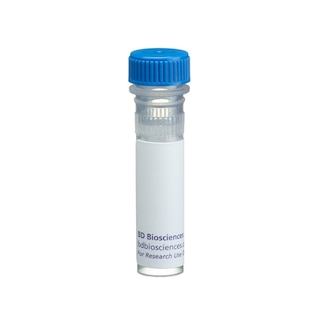-
Reagents
- Flow Cytometry Reagents
-
Western Blotting and Molecular Reagents
- Immunoassay Reagents
-
Single-Cell Multiomics Reagents
- BD® OMICS-Guard Sample Preservation Buffer
- BD® AbSeq Assay
- BD® OMICS-One Immune Profiler Protein Panel
- BD® Single-Cell Multiplexing Kit
- BD Rhapsody™ ATAC-Seq Assays
- BD Rhapsody™ Whole Transcriptome Analysis (WTA) Amplification Kit
- BD Rhapsody™ TCR/BCR Next Multiomic Assays
- BD Rhapsody™ Targeted mRNA Kits
- BD Rhapsody™ Accessory Kits
-
Functional Assays
-
Microscopy and Imaging Reagents
-
Cell Preparation and Separation Reagents
-
- BD® OMICS-Guard Sample Preservation Buffer
- BD® AbSeq Assay
- BD® OMICS-One Immune Profiler Protein Panel
- BD® Single-Cell Multiplexing Kit
- BD Rhapsody™ ATAC-Seq Assays
- BD Rhapsody™ Whole Transcriptome Analysis (WTA) Amplification Kit
- BD Rhapsody™ TCR/BCR Next Multiomic Assays
- BD Rhapsody™ Targeted mRNA Kits
- BD Rhapsody™ Accessory Kits
- United States (English)
-
Change country/language
Old Browser
This page has been recently translated and is available in French now.
Looks like you're visiting us from {countryName}.
Would you like to stay on the current country site or be switched to your country?






Western blot analysis of Total Stat1 (N-terminus) expression on A431 cells. A431 Cell Lysate (Cat. No. 611447) was stained with Purified Mouse Anti-Stat1 (N-terminus) (Cat. No. 610116) at dilutions of 1:250 (Lane 1), 1:500 (Lane 2), and 1:1000 (Lane 3). Stat1 expression was visualized with HRP Goat Anti-Mouse Ig (Cat. No. 554002).

Immunofluorescent staining of human fibroblast cells. Human fibroblasts were stained with Purified Mouse Anti-Total Stat1 (N-terminus) and visualized with FITC Goat Anti-Mouse Ig (Cat. No. 554001).


BD Transduction Laboratories™ Purified Mouse Anti-Total Stat1 (N-terminus)

BD Transduction Laboratories™ Purified Mouse Anti-Total Stat1 (N-terminus)

Regulatory Status Legend
Any use of products other than the permitted use without the express written authorization of Becton, Dickinson and Company is strictly prohibited.
Preparation And Storage
Product Notices
- Since applications vary, each investigator should titrate the reagent to obtain optimal results.
- Caution: Sodium azide yields highly toxic hydrazoic acid under acidic conditions. Dilute azide compounds in running water before discarding to avoid accumulation of potentially explosive deposits in plumbing.
- Source of all serum proteins is from USDA inspected abattoirs located in the United States.
- Sodium azide is a reversible inhibitor of oxidative metabolism; therefore, antibody preparations containing this preservative agent must not be used in cell cultures nor injected into animals. Sodium azide may be removed by washing stained cells or plate-bound antibody or dialyzing soluble antibody in sodium azide-free buffer. Since endotoxin may also affect the results of functional studies, we recommend the NA/LE (No Azide/Low Endotoxin) antibody format, if available, for in vitro and in vivo use.
- Species cross-reactivity detected in product development may not have been confirmed on every format and/or application.
- Please refer to www.bdbiosciences.com/us/s/resources for technical protocols.
Companion Products
.png?imwidth=320)


Stat (Signal transducer and activators of transcription) proteins are critical mediators of the biologic activity of cytokines, including interleukins, interferons, erythropoietin, and growth factors. Ligand-receptor interaction leads to activation of constitutively associated JAK family kinases and subsequent recruitment/activation of Stat proteins by tyrosine phosphorylation. Active Stat proteins then move to the nucleus to promote transcription of cytokine-inducible genes. Seven Stat proteins have been cloned, each of which is differentially expressed and/or activated in a cytokine-specific and cell type-specific manner. Stat1 and Stat2 are components of the ISGF3 (Interferon-Stimulated Gene Factor 3) complex, which is the primary transcription activator induced by the binding of the interferon to a specific cell-surface receptor. Stat1 has two alternatively spliced isoforms, 91-kDa Stat1α and 84 kDa Stat1β; Stat1α has 38 additional C-terminal amino acids. In response to the binding of IFNα, IFNγ, EGF, PDGF, or CSF-1 to their respective receptors, the Stat1 subunits become tyrosine-phosphorylated at Y701, and the complex is translocated to the nucleus. This results in the formation of an active complex that includes the DNA-binding p48 subunit. This complex is responsible for modulating the transcription of the interferon-stimulated genes (ISGs). Thus, phosphorylation of Y701 in Stat1 occurs in response to growth factors and cytokines, and is essential for normal transcriptional activity of the ISGF3 complex.
The 1/Stat1 monoclonal antibody recognizes the N-terminus of human Stat1 (both isoforms), regardless of phosphorylation status.
Development References (5)
-
Doan TN, Ali MS, Bernstein KE. Tyrosine kinase activation by the angiotensin II receptor in the absence of calcium signaling. J Biol Chem. 2001; 276(24):20954-20958. (Clone-specific: Immunoprecipitation, Western blot). View Reference
-
Dumoutier L, Louahed J, Renauld JC. Cloning and characterization of IL-10-related T cell-derived inducible factor (IL-TIF), a novel cytokine structurally related to IL-10 and inducible by IL-9. J Immunol. 2000; 164(4):1814-1819. (Clone-specific: Gel shift). View Reference
-
Dupuis S, Dargemont C, Fieschi C, et al. Impairment of mycobacterial but not viral immunity by a germline human STAT1 mutation. Science. 2001; 293(5528):300-303. (Clone-specific: Immunohistochemistry, Immunoprecipitation, Western blot). View Reference
-
Fu XY, Schindler C, Improta T, Aebersold R, Darnell JE Jr. The proteins of ISGF-3, the interferon alpha-induced transcriptional activator, define a gene family involved in signal transduction. Proc Natl Acad Sci U S A. 1992; 89(16):7840-7843. (Biology). View Reference
-
Sadowski HB, Shuai K, Darnell JE Jr, Gilman MZ. A common nuclear signal transduction pathway activated by growth factor and cytokine receptors. Science. 1993; 261(5129):1739-1744. (Biology). View Reference
Please refer to Support Documents for Quality Certificates
Global - Refer to manufacturer's instructions for use and related User Manuals and Technical data sheets before using this products as described
Comparisons, where applicable, are made against older BD Technology, manual methods or are general performance claims. Comparisons are not made against non-BD technologies, unless otherwise noted.
For Research Use Only. Not for use in diagnostic or therapeutic procedures.